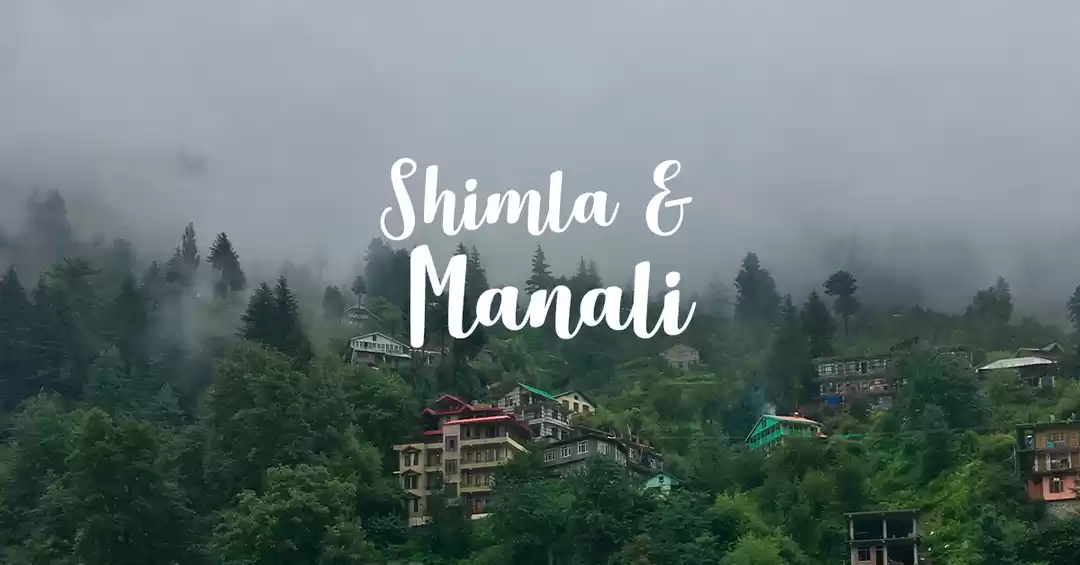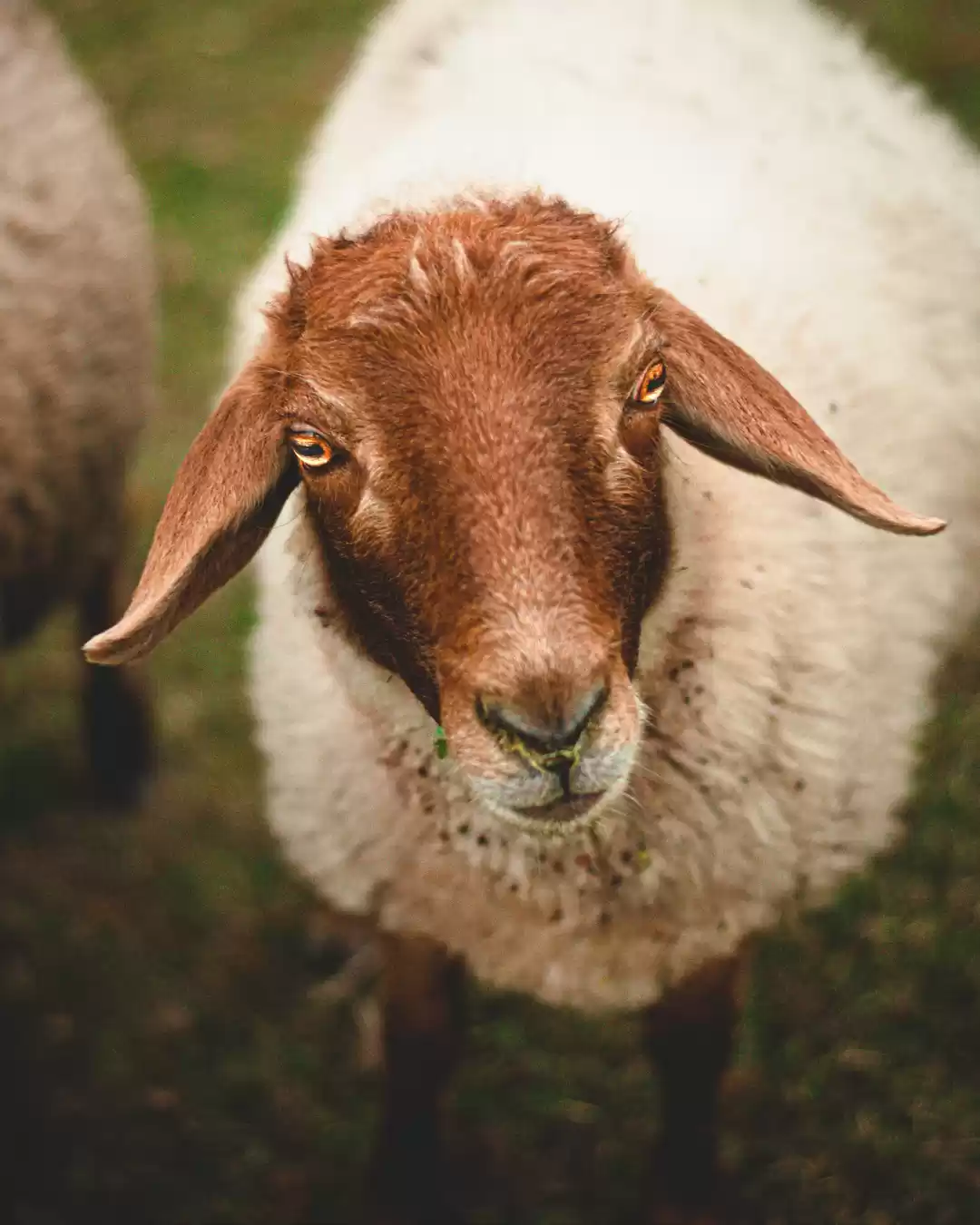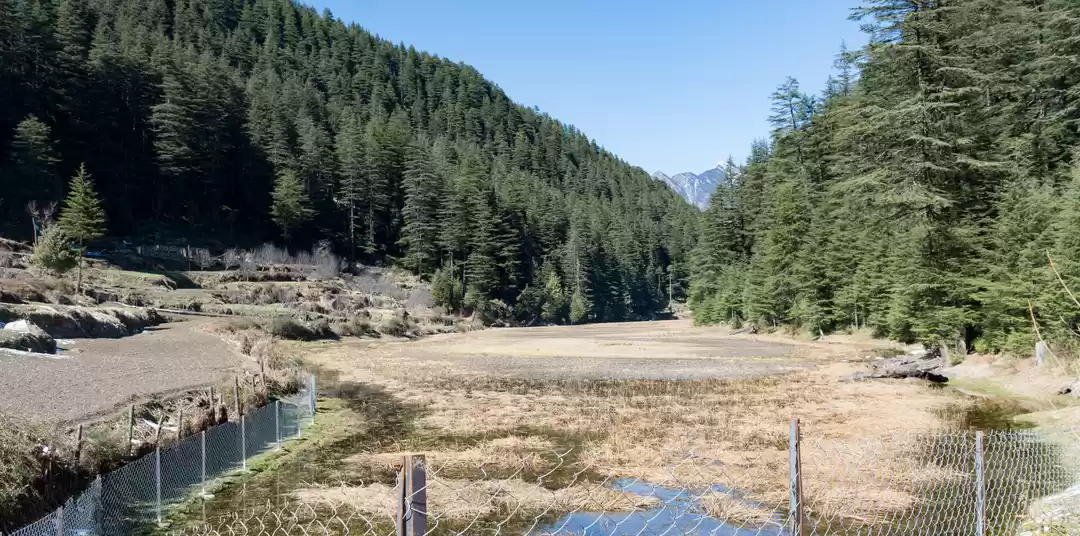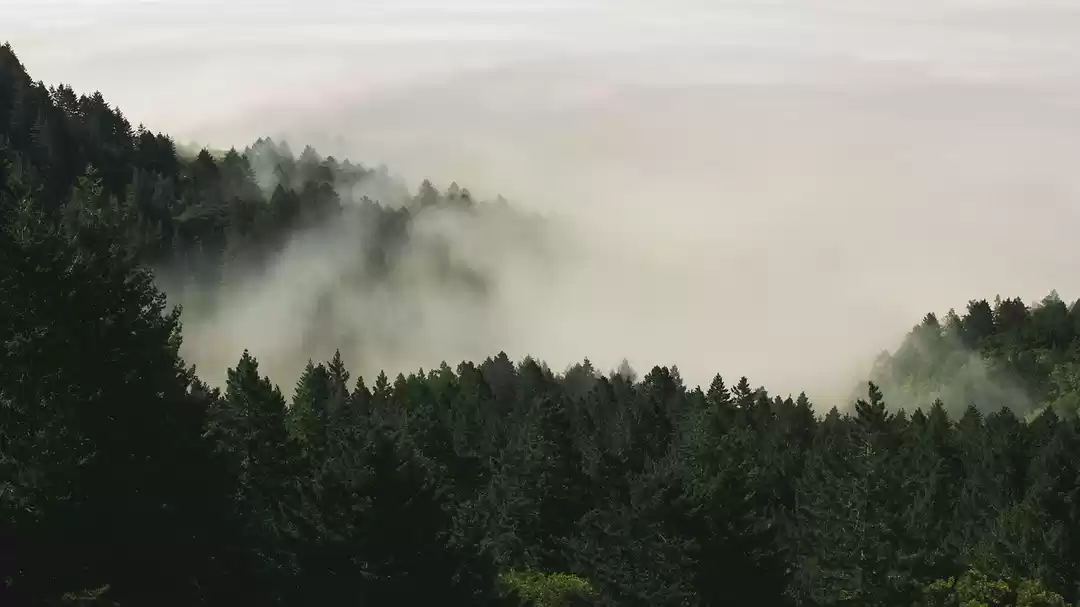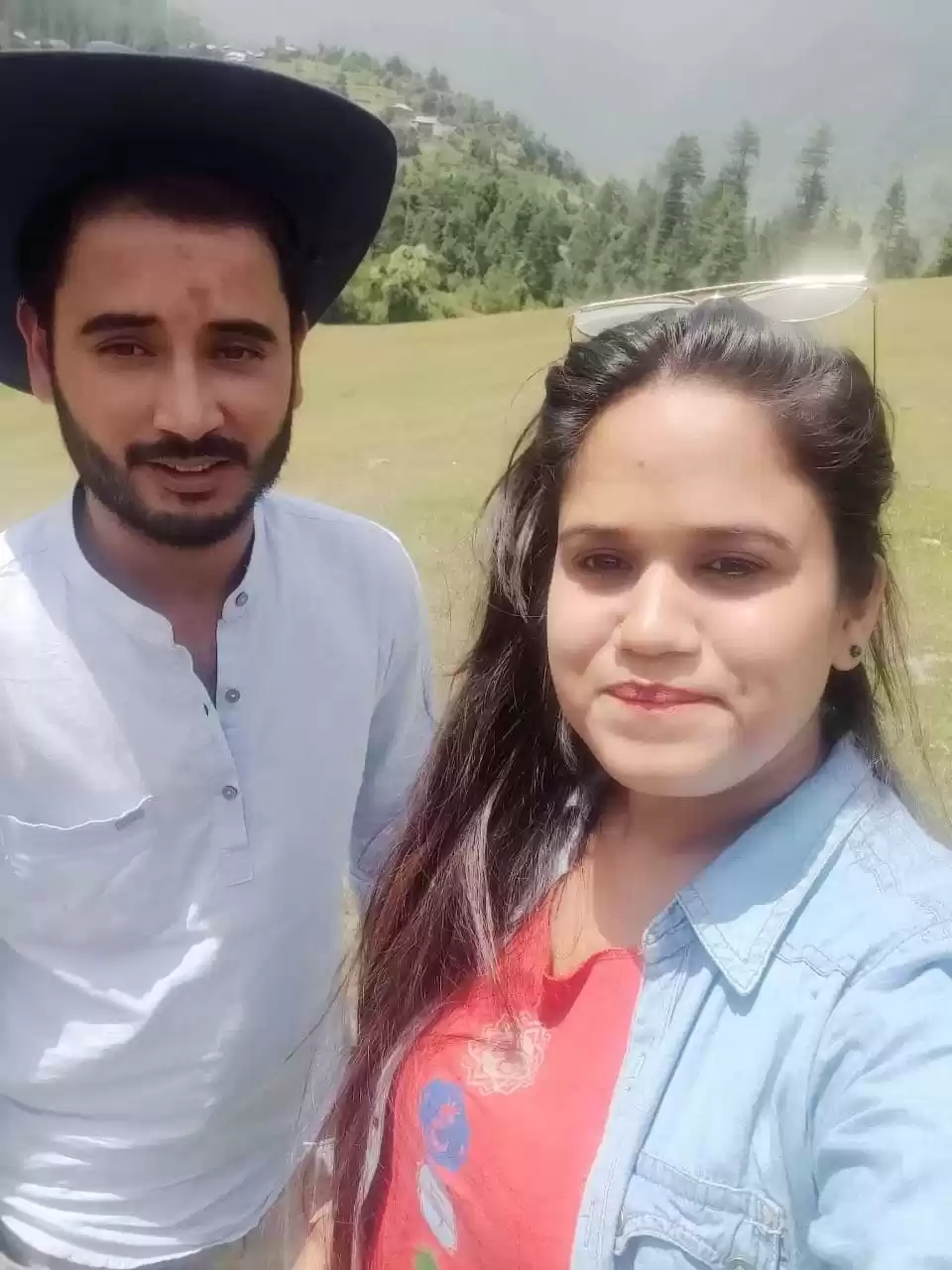
Planning a trip to the hills is now a painstaking exercise. You're like me if you've exhausted the bevvy of popular hill stations that are brimming to the absolute brim with too many tourists, all year round, so much so that you can find quainter spots in Gurugram's Cyber City. If you want serene and calm, I'd say get off at Delhi's Yamuna Bank metro station, than plan yet another mindless stroll through Manali's Mall road. The locals there could do with a little less of us.
Hotels in such places are noisy dharamsalas where college-goers and honeymooners, and those working remotely, all reside and are strangely content with just that ceremonious welcome bonfire on the first evening of their holiday, coupled with hot mocha and a lot of clicks to serve up the wanderlust vibe à la their Instagram personas. Not to forget the soupy kind of 'special' Maggi - which I've always wondered could just be the atta variant of the snack with a few little peas floating about - from the roadside eatery.
For my late-November winter sojourn in the hills, the Himachal off of the tourist handbooks wouldn't have done. It needed to be more off-the-grid, rustic, but most of all, homely.
My search put us in touch with the host of a wooden cottage on the banks of the Sainj river. It fulfilled my expectations in terms of the budget and that the whole property, with its porch and master bedroom and an attic hidden below the gabled roof, would be a private little nook for my partner and me.

The cottage is one of just 4-5 houses in a small hamlet named 'Ropa', a half-an-hour drive from a mucky and dare-I-say ugly town called Sainj. We alighted on the side of a narrow road running alongside the waist of the mountain it was scaling. The Sainj river flows over huge boulders on the other side, and there's an old-style wooden bridge, antique for it creaks and groans and sways if the walkers' steps aren't in sync. Our caretaker's wife and sons generously carried our luggage across while my partner and I moved gingerly, hands clasped around the bridge's railing. Once on the other end, we walked along the boundaries of houses built in the Kath-Kuni way of architecture. Two little girls stared at us in amazement from the window of their upper-storey room, their round eyes filled with a wondrous innocence as we smiled back at them. Perhaps they were young enough to not be able to fully grasp the concept of 'tourism' and may have thought of us as a new family moving into their little hamlet with all our bags but none of our proverbial 'baggage'. I'd imagined my pipe dream of moving to the hills, permanently, through their eyes.

We arrived at our cottage around noon on the third day of the fourth week of November - peak off-season. And as we explored the photogenic corners of the property, the sun rose above the mountain that stood tall and imposing in front of the cottage, illuminating the porch and the banks of the Sainj river. The nip in the air thawed; weather that seemed chilly moments ago felt balmy now, just the right amount, like Delhi's winter sun in December. My partner and I spent the next hour taking turns to pose on the little footsteps that led into the porch, and down from there to the river banks. Our luggage waited outside the front door, waiting to be unpacked. Sometime in between, we lounged on comfy mudha chairs and gorged on omelettes and parathas - our first meal of the day - cooked by our caretaker's wife. Soon though, by around 3 pm, the sun's warmth dissipated, and the temperature plummeted, keeping true to the climes we had reached. Once inside, we barely left our room, and our hands lay buried inside the warmth of our blankets.

Ropa's far removed from the frills of general stores selling groceries and other sundries, or any shops for that matter! It meant that we'd frequently trouble Mr Durga Das - who owns and runs an electronic products shop in the main town of Sainj - asking him to bring back, packs of Lays and Kurkere, and he'd dutifully get us our daily quota of food that he would have thought was part of the staple diet of folks from plains.
The next day, we drove uphill to visit Shangarh, a vast undulating meadow where the grass had turned a crisp, golden brown due to the winter season's dryness. Shorn of the irritating throng of tourists that fills such Himachali meadows - read Khajjiar - Shangarh had mostly locals sprawled on its grass, chatting up their friends, the young adults smoking, and the kids chasing the pahadi dogs whose luscious coat of fur glistened in the sunlight.

Looking into the distance from the meadow, as one scans Shangarh's cute, gabled, Kath-Kuni skyline, a wooden tower rises above the rest. This is the Shangchul Mahadev temple, named after the local deity. Previous visits to Himachal and my interaction with the locals have taught me that you'd probably be able to get around ten different folk tales out of the area's inhabitants about how the place came to be named, the story behind the biggest temple, and other legends. In Shangarh, besides the place having a mythical connection to the warring families in the Mahabharata, I also learnt that the local deity is believed to be the protector of couples who are shunned by society and face threats to their romantic union.

Knowing about the local deity's predilection, I would have surely loved to pray to this divine, progressive Himachali lord striving to protect love in an age of communal strife. Alas, tourists aren't allowed inside the towering temple in Shangarh, as decided by the locals who reside around it. Only members of the highest caste within the local community are allowed inside. The locals are careful not to word this reason in as many words. Instead, they politely inform visitors that no one can enter the temple because the 'devta' resides inside. "So why are 'human' clothes drying on the wooden balustrades of the temple's first storey?" I wondered. Mr Durga, who had driven us to Shangarh, explained that the reason was casteism and little else. "Koi devta bhakt ko nahi kahega ki mandir ke andar mat aao (No God would refuse entry in a temple to their devotees)," he said matter-of-factly.
I believed what Mr Durga told me, for I had visited similar tower-like temples in other parts of the state, one among them being the Shringa Rishi temple near Jibhi, where tourists are allowed inside to pay obeisance to their devta there. But, nevertheless, I'd say I'm wise enough to keep an open mind that there might be more reasons for the restrictions imposed in Shangarh and elsewhere in Himachal by locals than I could gather on my first visit.
A little downhill from the Shangarh meadow, we walked a narrow dirt path towards a cafe run by Parth, who's from Delhi. Parth is among the few new-age entrepreneurs who've taken the plunge to set up sustainable business establishments in the hills, bringing their sense of tourism and hospitality from the plains to these out-of-the-way hill stations. Make no mistake, though, it's a tough life for Parth and others of his ilk. Groceries and other amenities needed to serve the tourists staying in his cottage and dorms must be fetched from towns such as Aut, a good distance away from Shangarh; a trip to be made every fortnight, if not earlier. Moreover, landslides during the monsoons could mean that the only road that connects Shangarh to Aut could be washed away, forcing Parth to cancel the bookings for his dormitory. Parth's humble cafe had Divya Mantra prayer flags and other Tibetan wall decors, lending a homely vibe to its interiors; the place helped us satiate our craving for pizzas and fries. The next day, our caretaker served us Siddu, a traditional Himachali dumpling with a filling made in different ways, but usually consisting of walnuts, peanuts, cashews and dal mashed and mixed with spices. It's served with ghee and is known to help the locals cope with the extreme cold here. We helped ourselves to several Siddu dumplings and proceeded to visit the twin towers in Raila.

Distances between tourist attractions and habitable spots are great in Sainj Valley. The cheap state transport buses are few and far between, leaving visitors at the mercy of private cabbies charging Rs 1,500 for even the nearest spot. But as the road winds upwards and the journey, as a passenger, starts feeling tedious, one realises that it must be even tougher work for the drivers. So I started justifying the trip's price to myself as the car trudged along the winding roads, rickety and pockmarked in several places. Our driver Mr Meher Chand Thakur, a lanky gentleman with the archetypical 'Thakur' handlebar moustache, doubled up as a guide during the long journey, enthusiastically pointing at development works such as hydel power pipelines and dams that were mere specks in the distance to us. All the while, his car's stereo was tuned to a loop of Himachali pop songs - 10-20 minute medleys of various genres: they'd start with an upbeat tempo and, out of nowhere, break into a Bollywood qawwali-ish redo before returning to the hook.

We reached Raila to visit the 400-year-old twin towers, designated temples, but built as fortifications by rulers in olden times. Their small, squarish windows would allow the soldiers inside a better vantage point to ward off the enemy. Presently though, most such structures - another one being Chehni Kothi in Jibhi - are religious shrines, with the locals believing them to be the residences of their deities. Again, only an upper-caste person from the family of priests in the community can venture inside, perhaps once or twice a year, for the most special rituals.

Here, our driver to Raila, Mr Thakur, told us that there are 27,000 places of worship in the state, and the deities number a little more than that, with each village having its separate protector! He also explained that the God in a Himachali village isn't necessarily imagined as a metaphysical or abstract presence but as an exalted 'human' of the community who's always there and needs to be taken care of, fed, nurtured, obeyed, and prayed to.

It's an order of life that helps the people here find pleasure in the simplest of things and reason with the inescapable tragedies or natural calamities that may befall their community. It also makes them a bit cocky about the richness of their life in the lap of nature. As we drove back from Ropa to Aut to catch the bus to Delhi, our driver, Ghanshyam, couldn't resist voicing his displeasure with the way of life in the national capital. He became the third Himachali cabbie who had complained to me about falling seriously ill during their visit to Delhi. Flagging the city's unbearable heat and traffic, Ghanshyam waxed lyrical about the absence of illness in the hills. "Yahan toh Corona bhi naa ke barabar tha (Covid was almost non-existent here)," he said plainly. Of course, data would tell a different story about Covid cases in Himachal during the height of the pandemic. But the robustly built Ghanshyam - who lives without Zomato and Swiggy, doesn't eat out except the occasional "bandobast" or party, and is protected by his omnipresent Devta - is convinced that Devbhoomi Himachal, affords the best kind of life, rich for it's devoid of luxuries, and for its simpleness. I kind of agree, even though I can't bear the cold. More Siddu for me.
_____________
How to reach: One can take an overnight bus from Delhi to Manali and alight at Aut. From here, one can hail a private taxi at a cost of Rs 1000-1500 to reach Ropa, via the main town of Sainj. From Ropa, where the Airbnb mentioned in the piece is situated, private taxis can be hailed at a cost of Rs 1500-2000, inclusive of the return journey, to reach nearby tourist locations such as the Shangarh meadow, the twin towers of Raila and the Barshangarh waterfall.
Best time to visit: From March to May, if you want to visit during the tourist season. From October to December is the off-season, when there aren't many tourists in the region owing to the onset of the harsh winter season there.
Cottage mentioned in the piece: https://www.airbnb.co.in/rooms/752686935071278409. (If you want want to directly get in touch with the host, DM me here on Tripoto).



